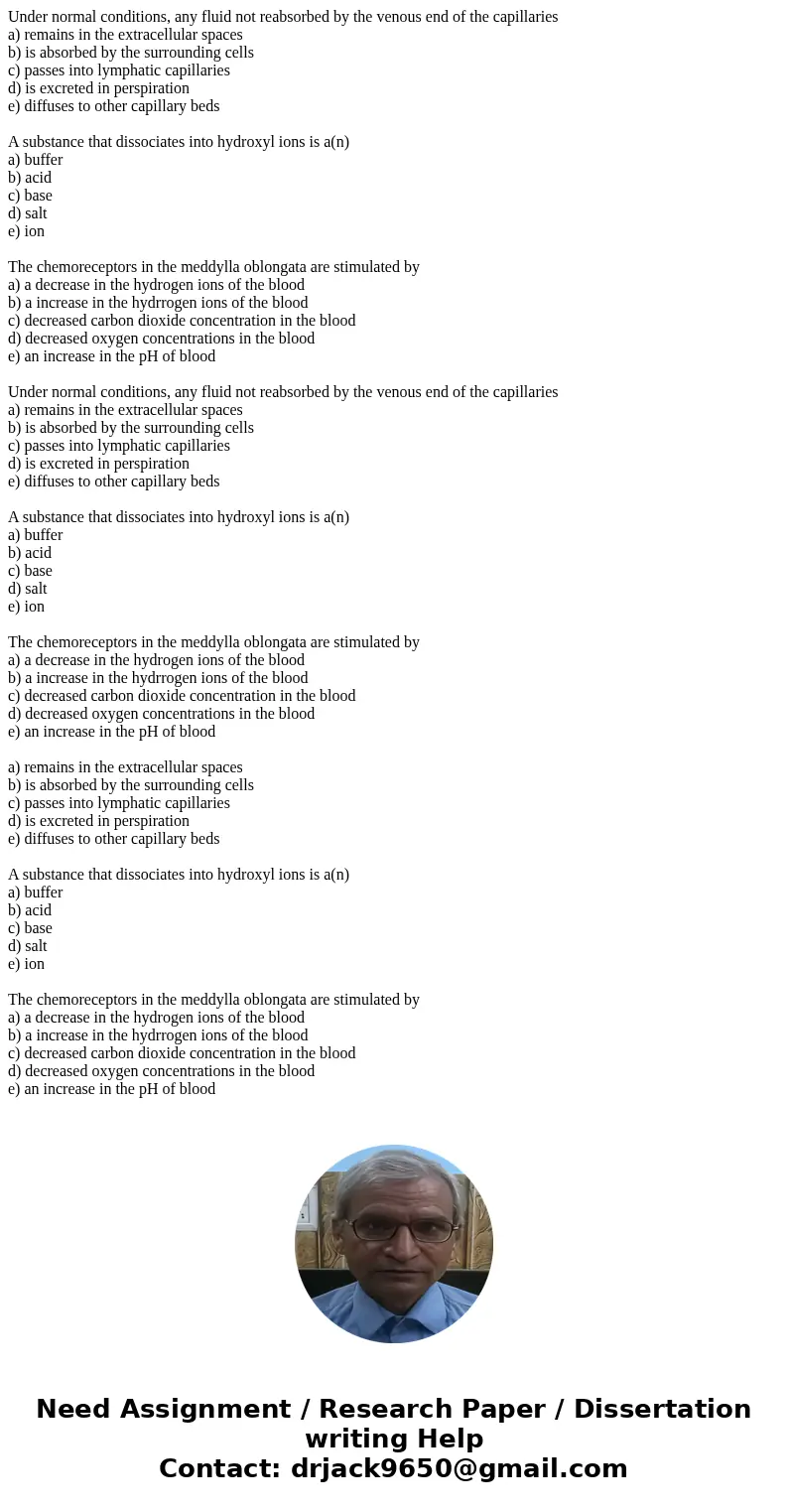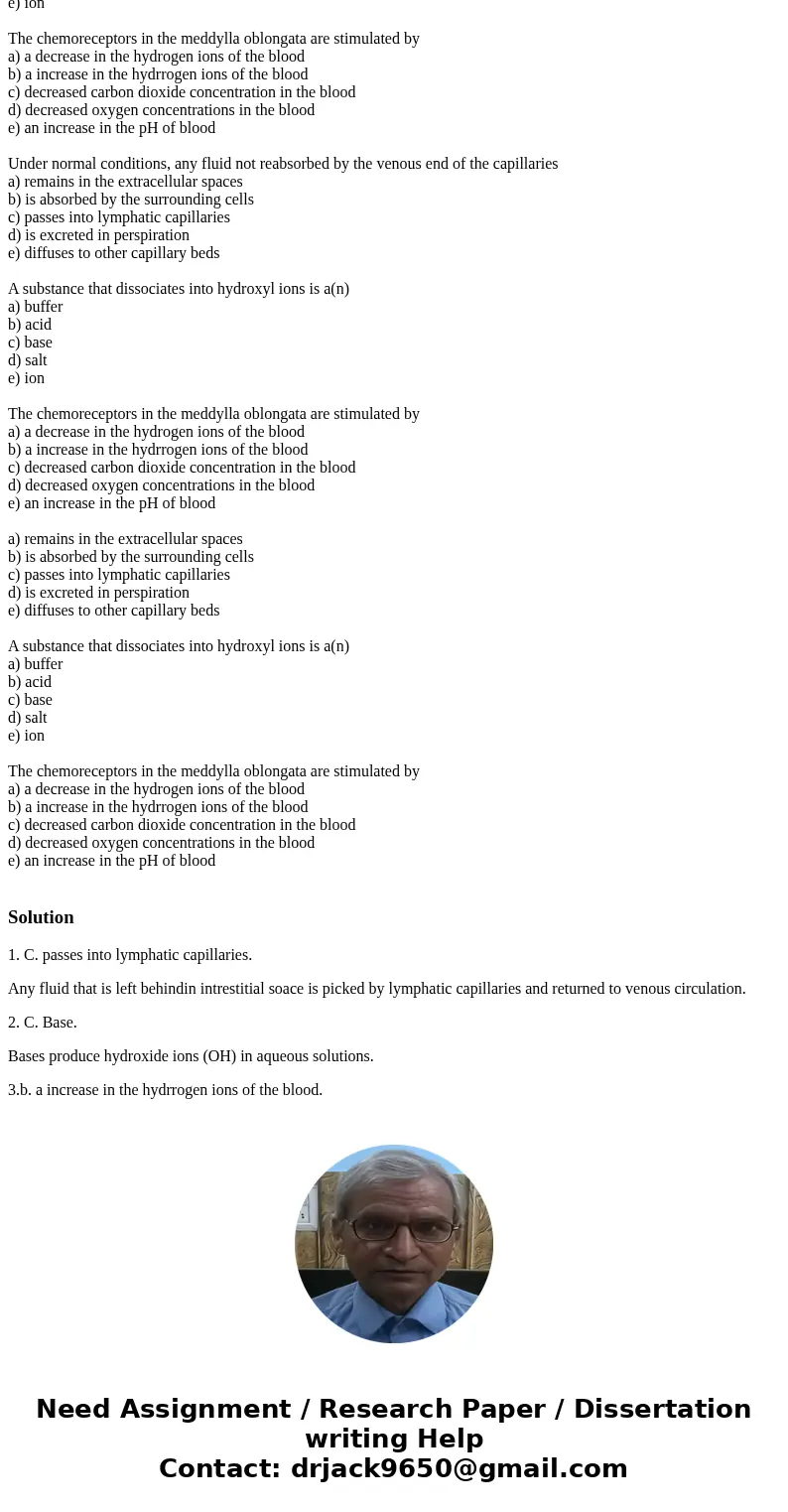Under normal conditions any fluid not reabsorbed by the veno
Under normal conditions, any fluid not reabsorbed by the venous end of the capillaries
a) remains in the extracellular spaces
b) is absorbed by the surrounding cells
c) passes into lymphatic capillaries
d) is excreted in perspiration
e) diffuses to other capillary beds
A substance that dissociates into hydroxyl ions is a(n)
a) buffer
b) acid
c) base
d) salt
e) ion
The chemoreceptors in the meddylla oblongata are stimulated by
a) a decrease in the hydrogen ions of the blood
b) a increase in the hydrrogen ions of the blood
c) decreased carbon dioxide concentration in the blood
d) decreased oxygen concentrations in the blood
e) an increase in the pH of blood
Under normal conditions, any fluid not reabsorbed by the venous end of the capillaries
a) remains in the extracellular spaces
b) is absorbed by the surrounding cells
c) passes into lymphatic capillaries
d) is excreted in perspiration
e) diffuses to other capillary beds
A substance that dissociates into hydroxyl ions is a(n)
a) buffer
b) acid
c) base
d) salt
e) ion
The chemoreceptors in the meddylla oblongata are stimulated by
a) a decrease in the hydrogen ions of the blood
b) a increase in the hydrrogen ions of the blood
c) decreased carbon dioxide concentration in the blood
d) decreased oxygen concentrations in the blood
e) an increase in the pH of blood
a) remains in the extracellular spaces
b) is absorbed by the surrounding cells
c) passes into lymphatic capillaries
d) is excreted in perspiration
e) diffuses to other capillary beds
A substance that dissociates into hydroxyl ions is a(n)
a) buffer
b) acid
c) base
d) salt
e) ion
The chemoreceptors in the meddylla oblongata are stimulated by
a) a decrease in the hydrogen ions of the blood
b) a increase in the hydrrogen ions of the blood
c) decreased carbon dioxide concentration in the blood
d) decreased oxygen concentrations in the blood
e) an increase in the pH of blood
Solution
1. C. passes into lymphatic capillaries.
Any fluid that is left behindin intrestitial soace is picked by lymphatic capillaries and returned to venous circulation.
2. C. Base.
Bases produce hydroxide ions (OH) in aqueous solutions.
3.b. a increase in the hydrrogen ions of the blood.


 Homework Sourse
Homework Sourse